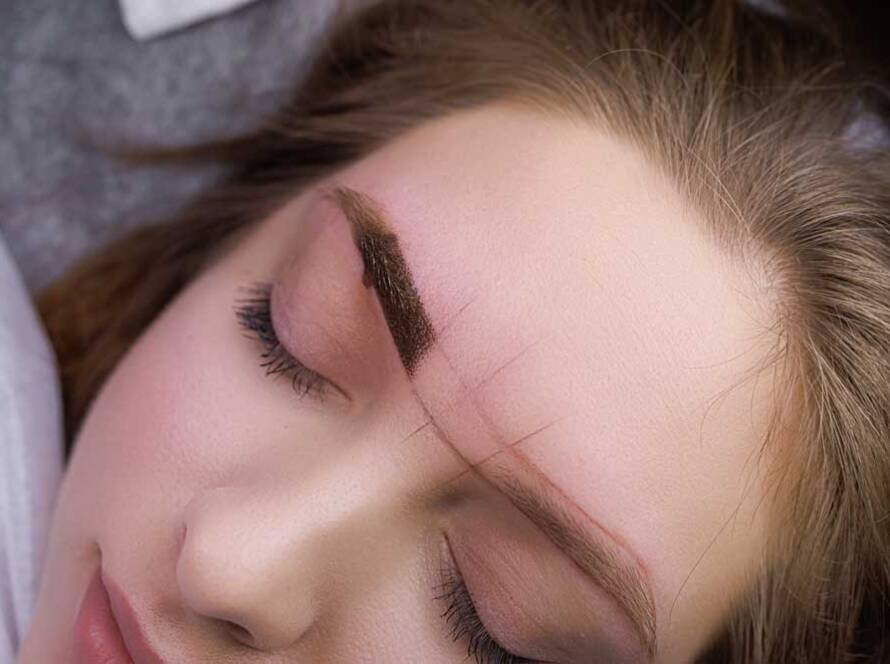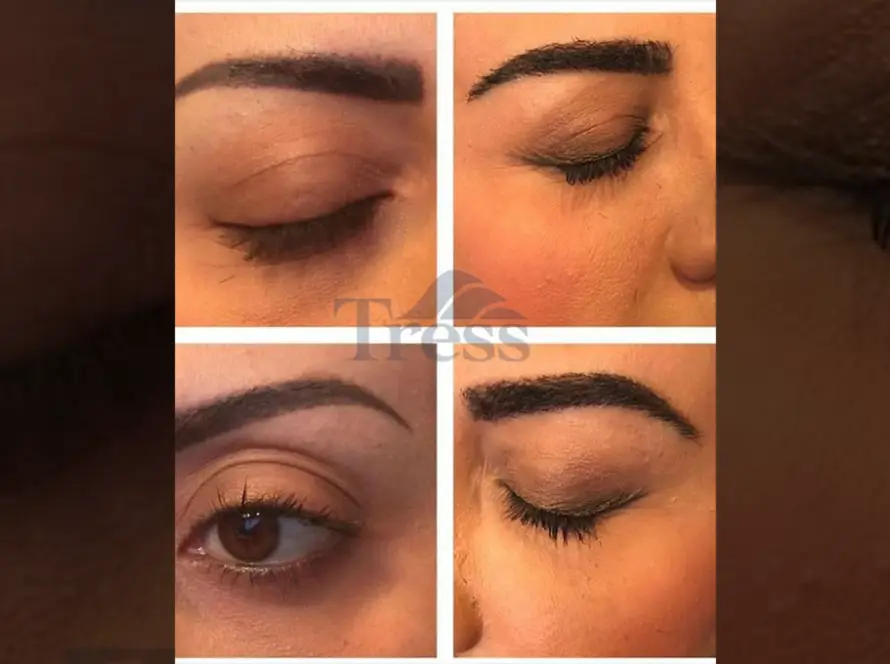Proper eyebrow transplant aftercare is crucial for achieving natural-looking, long-lasting results. By following your doctor’s instructions carefully, you can significantly speed up the healing process and ensure that transplanted grafts survive and grow as intended. Well-managed aftercare not only enhances the final aesthetic outcome but also prevents potential complications that might compromise your new brows.
Why Aftercare Matters for Eyebrow Transplants
Post-operative care plays a key role in the success of an eyebrow transplant. Careful aftercare reduces the risk of infections, protects delicate grafts during their critical early healing phase, and promotes natural hair growth. At Tress Clinic, patient-centric aftercare is a top priority. Every patient receives detailed post-op guidance, personalized follow-ups, and continuous support to ensure optimal recovery and perfectly shaped, natural-looking brows.
The First 24 Hours After Your Eyebrow Transplant
The first 24 hours after surgery are the most critical. Here’s what you should do:
- Keep the area clean and untouched: Avoid scratching, rubbing, or applying any pressure to your new eyebrows.
- Sleep in an elevated position: Use extra pillows to keep your head raised, reducing swelling.
- Follow prescribed medication routines: Take antibiotics or anti-inflammatory medications as directed by your doctor to prevent infection and ease discomfort.
- Avoid physical exertion: Rest is essential; no gym, bending, or heavy lifting during this period.
Washing and Cleaning Your Eyebrows Post-Transplant
Proper cleaning is essential to protect grafts and maintain hygiene:
- Wait for your doctor’s recommended time: Usually, the first wash is done 24–48 hours after surgery.
- Use medical foam or gentle cleansers: At Tress Clinic, a special medical foam is applied to both the donor and eyebrow areas for gentle cleansing.
- Pat dry carefully: Avoid rubbing; use a soft, clean tissue or gauze to dab gently.
- Repeat daily as instructed: Consistent, careful cleaning helps prevent scabbing and supports healthy graft recovery.
Eyebrow Transplant in Istanbul
What to Avoid After an Eyebrow Transplant
The success of an eyebrow transplant depends heavily on how well you protect the newly transplanted grafts in the first few weeks. Certain activities can significantly jeopardize the healing process and should be strictly avoided. Direct exposure to sunlight can damage sensitive skin, slow down healing, and even cause pigment changes in the eyebrow area.
If you must go outside, wear a hat or use a medical-grade sunblock only when approved by your doctor. Swimming in pools or the sea is also risky because chlorine and bacteria can lead to infections or irritate the healing skin. Makeup products, no matter how gentle they claim to be, should never be applied to the eyebrow area during the initial recovery phase, as they can clog pores and dislodge delicate grafts.
Finally, strenuous physical activities such as running, weightlifting, or yoga should be avoided because excessive sweating and increased blood pressure in the face may disturb the transplanted follicles. By eliminating these risks during the early stages of healing, you ensure that your new eyebrows settle firmly and grow naturally.
Eyebrow Transplant What to Expect
Managing Redness, Swelling, and Scabbing
It is completely normal to experience mild redness, swelling, and small scabs around the transplanted area during the first week after an eyebrow transplant. These are natural signs of your body’s healing response and usually subside within 7 to 10 days. Patients should understand that scabbing is a protective layer, not a complication, and should never be picked or scratched off, as this could pull out the newly implanted grafts and create patchy growth.
Swelling can be managed by keeping your head elevated while sleeping for the first few nights and avoiding salty foods that might contribute to fluid retention. If approved by your doctor, applying a cold compress gently to the forehead area (never directly on the eyebrows) can also help reduce puffiness. Itching, which often accompanies the healing process, should be tolerated without scratching, and if necessary, your doctor may recommend a mild, medically approved soothing cream. By following these guidelines, discomfort can be minimized and the recovery process will progress smoothly.
Trimming and Maintaining Transplanted Eyebrows
Transplanted eyebrow hairs are usually taken from the scalp, which means they retain the growth pattern of scalp hair for several months after the procedure. As a result, patients often notice that the new eyebrow hairs grow faster and longer than their natural eyebrow hairs during the first six to eight months. This is completely normal and does not indicate any problem with the transplant.
Regular trimming every one to two weeks is recommended to maintain a neat and natural appearance. Use small, clean eyebrow scissors and trim carefully to avoid pulling on the grafts during the early months. Over time, the transplanted hairs will gradually adapt to the slower growth cycle typical of eyebrow hairs, making trimming less frequent.
Tress Clinic specialists provide guidance on how to properly maintain the eyebrows during each follow-up consultation, ensuring that patients achieve the most natural and well-groomed results.
When Will Transplanted Eyebrows Start Growing Naturally?
Eyebrow hair growth after a transplant follows a specific cycle, and understanding this timeline helps manage expectations. In the first two to three weeks, it is common for the transplanted hairs to shed completely. This shedding phase is not a failure but a natural part of the process, as the hair follicles enter a dormant phase.
New growth typically begins around the third or fourth month, starting with fine, thin hairs that gradually thicken over time. By six months, most patients see significant growth, but full results may take nine to twelve months, depending on individual healing and hair growth patterns.
At Tress Clinic, patients benefit from personalized post-operative care, including follow-up consultations for up to 12 months. This long-term monitoring allows specialists to track progress, provide maintenance advice, and ensure that every patient achieves natural, aesthetically pleasing eyebrows.





1 Comment